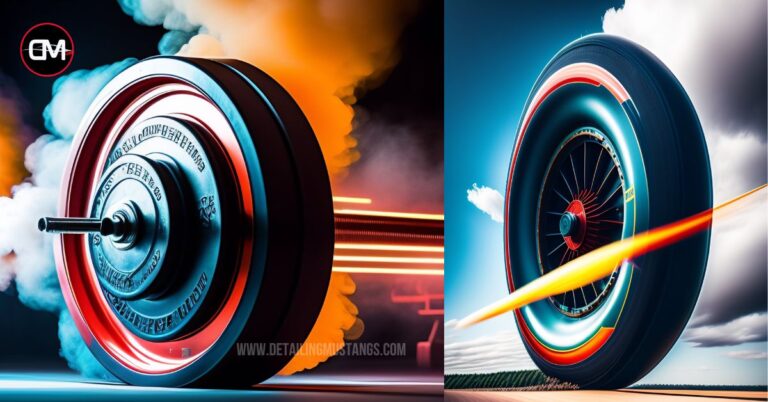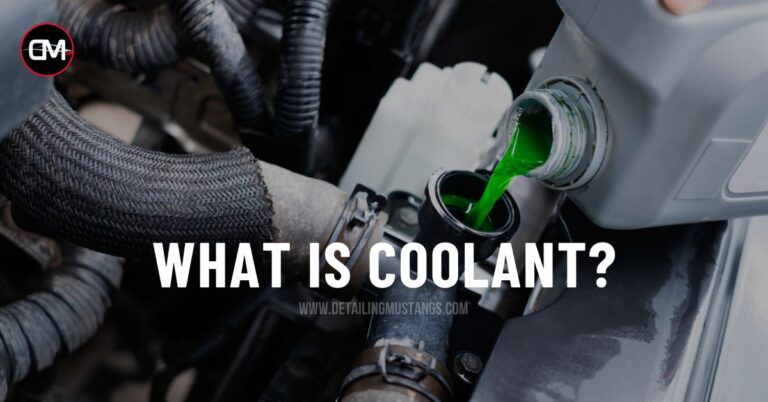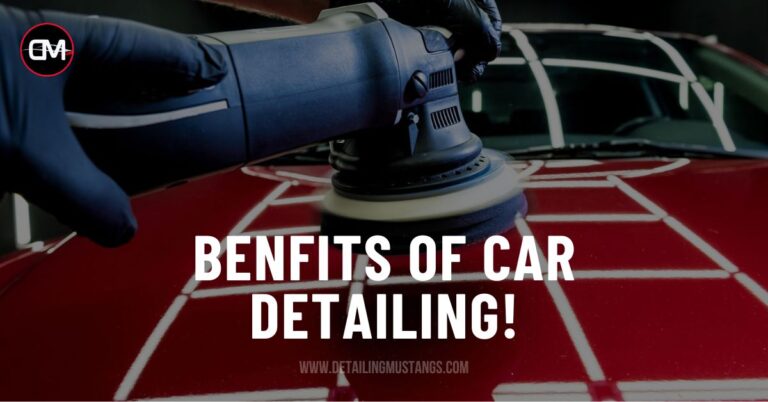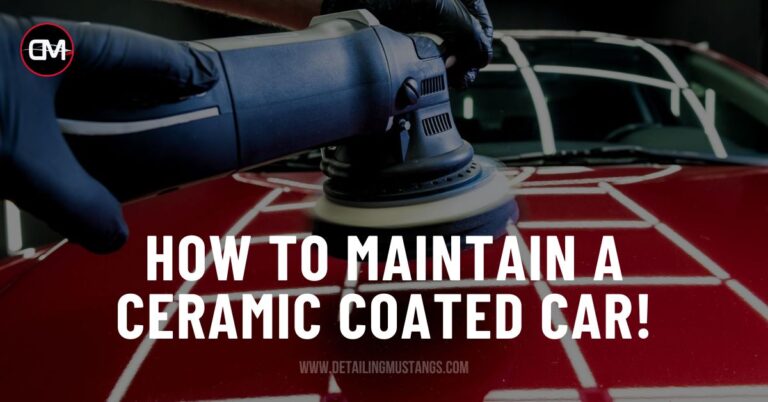“Rev Up Your Ride: The Ultimate Guide to Automotive Detailing for a Showroom Shine!”
I. Introduction
Hey there car enthusiasts, car lovers, and new car owners! Have you ever wondered what exactly auto detailing entails? Well, you’re in the right place because today we’re diving deep into this fascinating world of car beautification.
Whether you’re a beginner, someone who’s always wanted to know more, or a seasoned pro looking for some tips and tricks, this blog article is for you. So, buckle up and get ready to discover what auto detailing is all about and why it’s an absolute must for every car enthusiast. Let’s hit the road!
A. Definition of Automotive Detailing
Automotive detailing refers to the meticulous cleaning, restoration, and protection of a vehicle’s interior and exterior surfaces. It involves a comprehensive approach to maintaining a vehicle’s appearance and overall condition.
B. Importance of Detailing for Vehicle Maintenance
Detailing plays a crucial role in vehicle maintenance by preserving both the aesthetics and overall condition of the vehicle. Here are key reasons highlighting the importance of detailing:
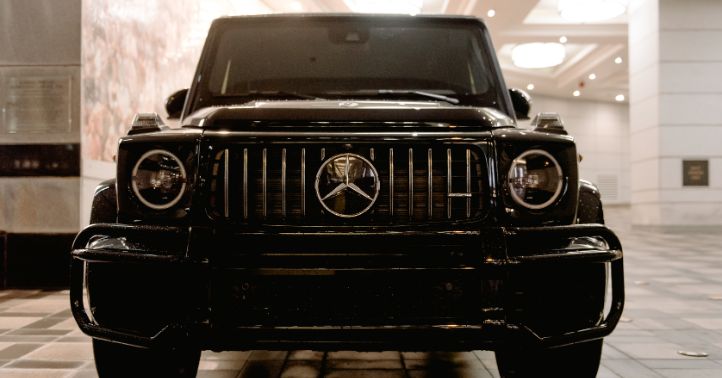
1. Preserving Aesthetics:
Detailing involves thorough cleaning, polishing, and protecting the exterior, maintaining a shiny and attractive appearance. A well-maintained vehicle not only looks good but also reflects positively on its owner.
2. Resale Value:
Regular detailing helps retain a vehicle’s resale value. A well-maintained car with a clean interior and exterior is more appealing to potential buyers, leading to a higher resale value.
3. Protection Against Environmental Elements:
Detailing provides a protective layer against environmental factors such as UV rays, harsh weather, and contaminants. This protection prevents paint damage, rust, and corrosion, extending the lifespan of the vehicle.
4. Preventing Wear and Tear:
Cleaning and conditioning interior surfaces prevent premature wear and tear. Regular maintenance of leather, fabric, and other materials ensures they remain in good condition, reducing the need for costly repairs or replacements.
5. Enhanced Driving Experience:
A clean and well-maintained vehicle contributes to a more enjoyable driving experience. It creates a comfortable and pleasant atmosphere inside the car, positively impacting the driver and passengers.
6. Identifying Potential Issues:
During the detailing process, professionals often inspect the vehicle for any signs of damage, wear, or issues that may require attention. Early identification allows for prompt repairs, preventing more significant problems in the future.
7. Preventing Corrosion:
Detailing helps protect the vehicle’s exterior surfaces, including the paint and metal, from corrosive elements like salt and road debris. This is particularly important in areas with harsh weather conditions.
8. Improved Safety:
Clean windows and mirrors contribute to better visibility, ensuring a safer driving experience. Detailing includes thorough cleaning of these components, enhancing overall safety on the road.
In summary, automotive detailing is not just about maintaining a vehicle’s appearance; it’s a comprehensive approach to preserving its value, ensuring longevity, and contributing to a safer and more enjoyable driving experience.
II – Components of Automotive Detailing
Automotive detailing involves a meticulous approach to cleaning, restoring, and protecting a vehicle, both inside and out. The components of automotive detailing encompass various aspects to ensure a comprehensive and thorough treatment. Here are the key components:
A. Exterior Detailing:
- Washing and Drying: Thorough cleaning of the exterior surfaces, including the body, windows, and wheels, to remove dirt, grime, and contaminants.
- Paint Correction and Polishing: Addressing imperfections in the paint, such as swirl marks or scratches, through polishing and paint correction techniques.
- Waxing and Sealants: Applying a protective layer, such as wax or sealant, to enhance the shine and provide a barrier against environmental elements
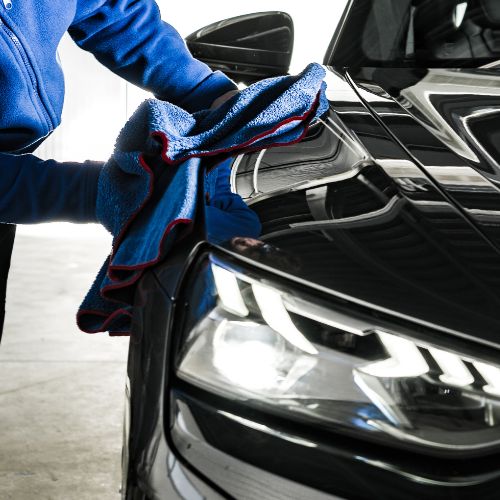
B. Interior detailing
- Vacuuming: Removing dust, dirt, and debris from carpets, upholstery, and other interior surfaces using a vacuum cleaner.
- Cleaning Surfaces: Wiping and cleaning surfaces such as dashboard, console, and door panels to eliminate dust and stains.
- Leather Conditioning: Treating leather seats and surfaces with conditioning products to prevent cracking and maintain suppleness.
- Window and Mirror Cleaning: Ensuring clear visibility by cleaning and treating windows and mirrors inside the vehicle.
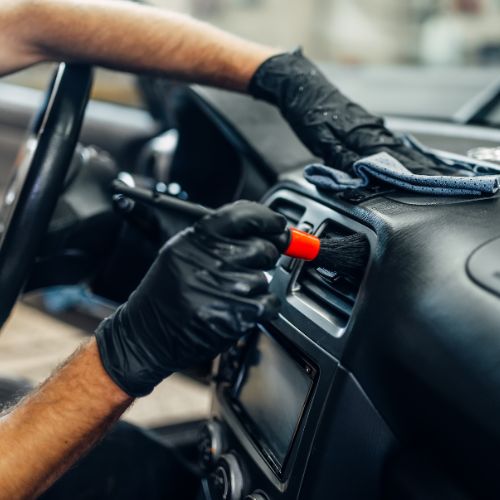
C. Tire and Wheel Detailing
- Cleaning: Thoroughly cleaning tires and wheels to remove brake dust, dirt, and grime.
- Dressing: Applying tire dressing to enhance the appearance of tires and provide protection against cracking.
D. Engine Bay Detailing
- Cleaning: Carefully cleaning the engine bay to remove grease, dirt, and debris.
- Dressing: Applying a protective dressing to hoses and plastics to prevent fading and cracking.
E. Specialized Detailing Services
- Ceramic Coating: Applying a ceramic coating to provide a durable and long-lasting protective layer on the vehicle’s paint surface.
- Paint Protection Film: Installing a transparent film to shield the paint from rock chips, bug splatter, and other potential damage.
F. Odor Elimination
- Addressing Unpleasant Smells: Identifying and eliminating odors within the vehicle using specialized products and techniques.
G. Quick Detailing
- Spot Cleaning: Addressing minor issues promptly to maintain the vehicle’s appearance between thorough detailing sessions.
H. Maintenance Tips
- Regular Washing: Establishing a routine for washing the vehicle to prevent the buildup of contaminants.
- Monitoring and Prompt Action: Keeping an eye out for issues like bird droppings or water spots and addressing them promptly.
These components work together to ensure a comprehensive automotive detailing process, enhancing the vehicle’s appearance, protecting surfaces, and contributing to its overall maintenance and longevity.
III. Professional vs. DIY Detailing
Choosing between professional and DIY detailing depends on various factors, and both options have their own set of advantages and drawbacks.
A. Professional Detailing:

1. Expertise:
- Pros: Professional detailers have extensive knowledge and experience, ensuring a high-quality finish.
- Cons: The expertise comes at a cost, making professional services relatively more expensive.
2. Specialized Equipment:
- Pros: Professionals use specialized tools and equipment, leading to more efficient and effective detailing.
- Cons: The use of advanced equipment may contribute to higher service costs.
3. Time Efficiency:
- Pros: Professional detailing is often quicker, saving the vehicle owner time and effort.
- Cons: Scheduling an appointment may require planning, and the service may not be immediately available.
4. Thoroughness:
- Pros: Professionals pay meticulous attention to detail, ensuring a comprehensive cleaning of both interior and exterior.
- Cons: The thoroughness may lead to a longer service time.
B. DIY Detailing:

1. Cost-Effective:
- Pros: DIY detailing is usually more budget-friendly as it eliminates labor costs.
- Cons: Investing in quality products initially may require an upfront cost.
2. Flexibility:
- Pros: DIY allows flexibility in choosing when and where to detail the vehicle, catering to the owner’s schedule.
- Cons: The time and effort required for DIY detailing may be a drawback for those with busy lifestyles.
3. Personalization:
- Pros: DIY enables owners to personalize the detailing process, using specific products and techniques based on personal preferences.
- Cons: Lack of experience may result in less effective detailing, especially for complex tasks.
4. Learning Experience:
- Pros: DIY detailing offers an opportunity for vehicle owners to learn about the detailing process and develop new skills.
- Cons: Initial attempts may not yield professional-level results, requiring a learning curve.
IV. Tips for DIY detailing
Embarking on a DIY detailing adventure can be a rewarding experience, ensuring your vehicle stays clean and well-maintained. Here are some tips to help you achieve professional-level results:
1. Gather the Right Tools and Products:
- Invest in quality detailing tools such as microfiber towels, applicators, brushes, and a dual-action polisher (if polishing is involved).
- Choose reputable detailing products, including car wash soap, wax or sealant, interior cleaner, and tire dressing.
2. Start with a Thorough Wash:
- Use a pH-balanced car wash soap and a two-bucket washing method to prevent swirls and scratches.
- Clean the wheels and tires separately with dedicated products.
3. Clay Bar for Smooth Surfaces:
If your vehicle’s paint feels rough to the touch, use a clay bar to remove contaminants and achieve a smooth surface before polishing or waxing.
4. Polish to Remove Imperfections:
- Polish the paint surface if there are swirl marks, light scratches, or oxidation. A dual-action polisher can make this task more efficient.
- Follow up with a fine polish for added gloss.
5. Wax or Seal for Protection:
- Apply a high-quality carnauba wax or synthetic sealant to protect the paint and enhance its shine.
- Consider using a paint sealant for longer-lasting protection.
6. Detail the Interior:
- Vacuum the interior thoroughly, including carpets, seats, and crevices.
- Use a gentle interior cleaner for surfaces like dashboards, consoles, and door panels.
- Condition leather seats to keep them supple and prevent cracking.
7. Clean Windows and Mirrors:
- Use a dedicated glass cleaner and microfiber towels to clean windows and mirrors.
- Wipe in a horizontal motion on the interior and a vertical motion on the exterior to easily identify streaks.
8. Tackle Upholstery and Carpet Stains:
- Address stains promptly using appropriate cleaners for upholstery and carpeted areas.
- Test any new cleaning product in an inconspicuous area to ensure it won’t damage the material.
9. Attention to Detail:
- Clean and dress door jambs and other often-neglected areas.
- Use detailing brushes to clean vents, buttons, and other intricate areas in the interior.
10. Regular Maintenance:
- Establish a routine for regular washing and touch-ups to keep your vehicle looking its best.
- Address any bird droppings, tree sap, or other contaminants promptly to prevent damage.
11. Stay Safe:
- Work in a shaded area to prevent products from drying too quickly and leaving residues.
- Wear protective gear, such as gloves and eye protection, especially when working with chemicals.
12. Educate Yourself:
- Keep learning about new detailing techniques and products.
- Join online forums or communities to share experiences and gain insights from other DIY enthusiasts.
Remember, patience and attention to detail are key in DIY detailing. Take your time, enjoy the process, and marvel at the transformation you can achieve with your own hands.
V. Specialized Detailing Services
Specialized detailing services go beyond the standard cleaning and maintenance, offering advanced treatments to enhance the protection and appearance of your vehicle. Here are some specialized detailing services that take car care to the next level:
A. Ceramic Coating
- What it does: Ceramic coatings are liquid polymer applications that chemically bond with the factory paint, creating a protective layer. They offer long-lasting protection against contaminants, UV rays, and harsh weather.
- Benefits: Enhanced gloss, water repellency, and resistance to scratches. Requires less frequent waxing.
B. Graphene Coating
What it is: A cutting-edge ceramic coating infused with graphene, a single layer of carbon atoms arranged in a hexagonal lattice. Graphene enhances the coating’s properties, offering superior durability and performance.
Benefits:
1. Enhanced Durability: Graphene’s strength and bonding properties contribute to a more resilient coating.
2. Heat Resistance: Graphene coatings often provide better resistance to extreme temperatures.
3. Hydrophobic Effect: Repels water and contaminants effectively, leading to improved water beading.
4. UV Protection: Guards against UV rays, preventing oxidation and color fading.

C. Paint Protection Film (PPF) with TPH (Thermoplastic Polyurethane) and TPU (Thermoplastic Polyurethane):
- What it is: PPF is a transparent film applied to the vehicle’s paint surface. TPH and TPU are types of materials used in premium PPF formulations, enhancing flexibility and self-healing properties.
- Benefits:
- Impact Resistance: TPH and TPU contribute to the film’s ability to absorb and disperse impact energy, protecting against stone chips and road debris.
- Self-Healing Properties: TPU-infused PPF has the ability to heal minor scratches and swirl marks when exposed to heat.
- Clarity: Maintains optical clarity, allowing the original paint color and finish to show through.
- Long-Term Protection: Provides long-lasting protection against environmental elements.
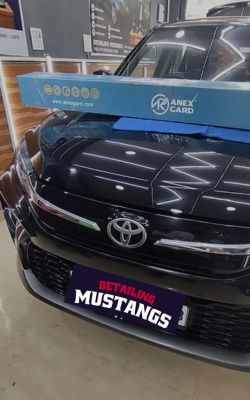
D. Comparison between Ceramic Coating and PPF:
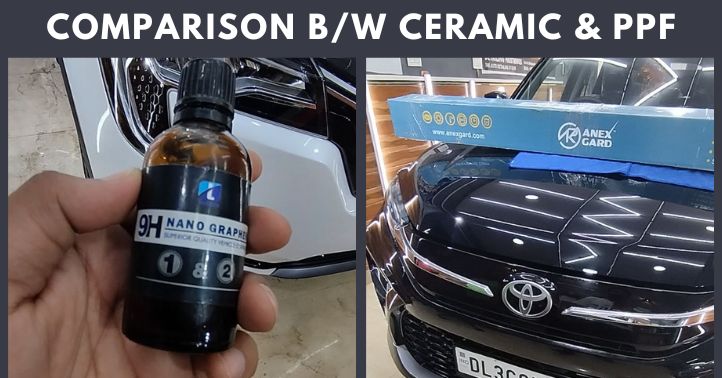
- Protection Level:
- Ceramic Coating: Provides a sacrificial layer on the paint surface, protecting against UV rays, oxidation, and chemical contaminants.
- PPF: Offers physical protection against stone chips, bug splatter, and minor abrasions.
- Durability:
- Ceramic Coating: Durable with longevity, but may require periodic reapplication.
- PPF: Highly durable and can withstand more aggressive physical impacts.
- Application:
- Ceramic Coating: Applied as a liquid and cures on the paint surface.
- PPF: Installed as a film, requiring precise cutting and fitting to the vehicle’s contours.
- Self-Healing:
- Ceramic Coating: Generally does not possess self-healing properties.
- PPF: Some formulations, especially those with TPU, have self-healing capabilities for minor scratches.
- Aesthetics:
- Ceramic Coating: Enhances gloss and depth, providing a sleek appearance.
- PPF: Maintains the original paint’s appearance, offering a nearly invisible protective layer.
- Cost:
- Ceramic Coating: Generally more cost-effective than PPF.
- PPF: Can be more expensive due to material costs and labor involved in installation.
Ultimately, the choice between ceramic coating and PPF depends on individual preferences, budget, and the specific type of protection desired. Some enthusiasts may opt for a combination of both for comprehensive coverage.
VI. Maintenance Tips for a Detailed Vehicle
Maintaining the detailed appearance of your vehicle requires consistent care and attention. Here are some maintenance tips to help you keep your car looking pristine:
- Regular Washing:
- Frequency: Wash your car regularly, ideally every two weeks, to remove dirt, contaminants, and bird droppings promptly.
- Use a Grit Guard: Use a grit guard in your wash bucket to prevent dirt and debris from being reintroduced to the sponge or mitt.
- Quick Detailing:
- Between Washes: Use a quick detailer to remove light dust, fingerprints, and fresh contaminants between regular washes.
- Microfiber Cloths: Use high-quality microfiber cloths to avoid scratching the paint.
- Wheel Maintenance:
- Regular Cleaning: Clean your wheels and rims regularly to prevent brake dust buildup.
- Protect with Sealant: Apply a wheel sealant to make future cleaning easier and protect against contaminants.
- Interior Care:
- Vacuuming: Regularly vacuum the interior to remove dirt, dust, and debris from carpets and upholstery.
- Use Interior Cleaner: Clean surfaces such as the dashboard, door panels, and center console with a suitable interior cleaner.
- Leather Conditioning:
- Condition Regularly: If your vehicle has leather seats, condition them periodically to maintain their suppleness and prevent cracking.
- Avoid Harsh Cleaners: Use leather cleaners specifically designed for automotive applications.
- Window and Mirror Cleaning:
- Regular Cleaning: Clean windows and mirrors regularly to maintain visibility and enhance the overall appearance of the vehicle.
- Avoid Streaks: Use a high-quality glass cleaner and lint-free microfiber towels to prevent streaking.
- Address Spots and Stains Promptly:
- Interior: Quickly address spills and stains on the interior to prevent them from setting and becoming difficult to remove.
- Exterior: Remove bird droppings, tree sap, and other contaminants promptly to prevent damage to the paint.
- Ceramic Coating Maintenance:
- Avoid Harsh Chemicals: Use pH-neutral car wash soap to avoid degrading the ceramic coating.
- Regular Inspection: Periodically inspect the coating for any signs of damage or wear.
- Tire Dressing:
- Regular Application: Apply tire dressing to maintain a deep, rich appearance and protect against UV rays.
- Avoid Overuse: Use tire dressing sparingly to prevent sling onto the vehicle’s paint.
- Avoid Automated Car Washes:
- Hand Wash Preferred: Whenever possible, hand wash your vehicle to minimize the risk of scratches and swirl marks.
- Touchless Car Washes: If using automated car washes, opt for touchless options to reduce the risk of damage.
- Park in the Shade:
- UV Protection: Whenever possible, park your vehicle in the shade to protect the paint and interior from the damaging effects of UV rays.
- Use a Car Cover: Consider using a car cover if the vehicle will be parked for an extended period.
- Regular Inspections:
- Exterior: Regularly inspect the exterior for any chips, scratches, or areas that may need attention.
- Interior: Check the interior for any signs of wear, damage, or items that require cleaning.
By incorporating these maintenance tips into your routine, you’ll ensure that your detailed vehicle remains in top condition, preserving its appearance and value over time.
VII. Conclusion
- Detailing is an investment in your vehicle’s future, preserving its aesthetic appeal and overall condition.
- Whether you choose professional services or DIY, regular care and attention are key.
- Share your detailing stories, ask questions, and let your vehicle shine with the love it deserves!
In essence, automotive detailing is a blend of art and science, where attention to detail transforms your vehicle into a well-pampered masterpiece. Whether you’re a detailing enthusiast or someone looking to enhance their car’s appearance, these insights provide a roadmap for achieving and maintaining a showroom-worthy finish. Now, it’s time to show your car some love and enjoy the benefits of a meticulously detailed vehicle.


